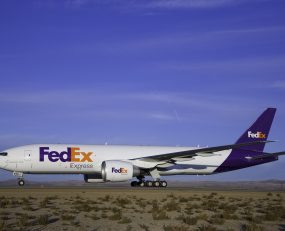
Normally, FedEx’s annual results might be regarded as unexciting yet the company regards them as a minor triumph. Released yesterday (July 1, 2020), they showed a corporation of apparently remarkable stability.
Revenue was more or less flat through the year at US$69.2bn and the fourth quarter was similar at $17.4bn, just $0.4bn below last years numbers. Profit numbers were not as good, with results for the year adjusted for exceptional items down by a third to US$2.49bn. Operating profit was similarly hit at US$2.42bn, a 46% fall.
These numbers did not quite reflect the volatility in FedEx’s various markets. Looking at the individual divisions, the core FedEx Express business saw a fall of just under 5% year-on-year in its revenue but suffered badly in terms of profits which more than halved year-on-year to $996m. This might appear to be surprising in that airfreight was at a premium in March, April and May, however, it appears that the fall in parcel activity that hit FedEx was only partly offset by the airfreight boom. Discussing the results, FedEx made a lot of optimistic noises about “constrained air capacity” and the opportunities on trans-Atlantic routes, but the profit numbers suggest that the company is simply more efficient at handling parcels rather than conventional air cargo.
FedEx obviously benefitted from the boom in e-retailing over the past two quarters, with this reflected in the growth of FedEx Ground. Here revenue was up 11% year-on-year to US$22.7bn. Yet again profits did not benefit, with operating income down by $649m from last years number to $2.014bn. The problem here seemed to be a variety of higher costs, such as protection for staff, insurance costs and the loss of Amazon’s business. The higher volume of business from e-retail and the ability to charge more for home delivery only partially offset the higher costs. An underlying problem is that last-mile in ‘Business-to-Consumer’ is still more difficult and less profitable than ‘Business-to-Business”.
At FedEx Freight both revenue and operating profit edged-down. It is also worth noting that FedEx continues to wrestle with its TNT purchase, with integration costs expected to continue at a run-rate of $170m in 2021.
FedEx was upbeat about these results, hailing them as a positive achievement in a very difficult market. This is probably correct, however, it should be noted that FedEx is having to work hard to make e-retail delivery services pay as well as ‘Business-to-Business’ and for all the talk of the strength of the air freight market the company does suffer when international parcel volumes fall.
Source: Transport Intelligence
Author: Thomas Cullen